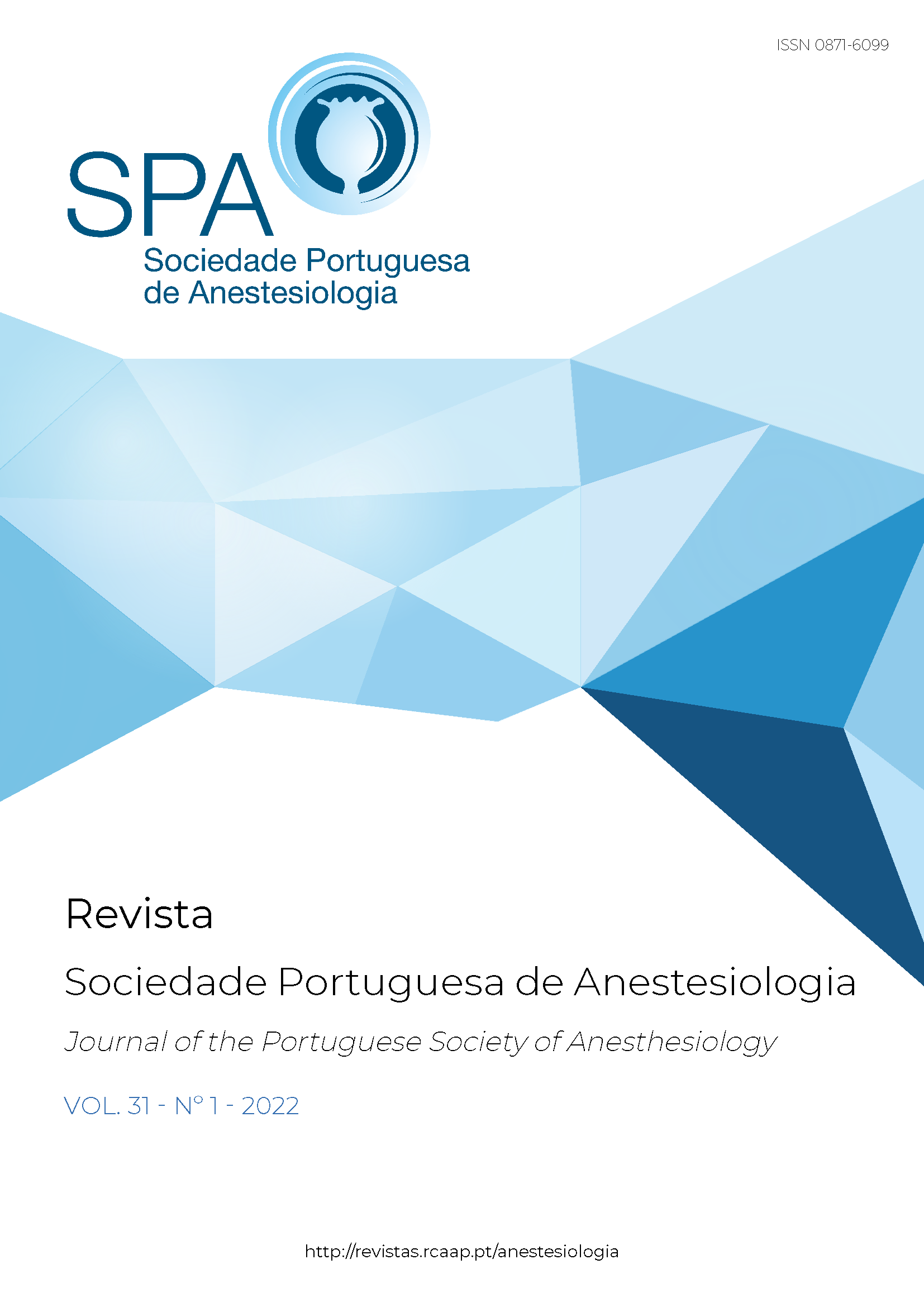Regional Analgesia in Intensive Care Medicine - Consensus Position at Centro Hospitalar Universitário Lisboa Norte
Analgesia Regional em Medicina Intensiva
DOI:
https://doi.org/10.25751/rspa.26643Keywords:
Anesthesia and Analgesia; Critical Care; Intensive Care Units.Abstract
The qualification of health services represents a core objective, inscribed in the demand for continuous improvement of care. Pain management, a core symptom with the greatest capacity to affect the quality of life of patients, is crucial in the pursuit of this objective. In Intensive Care Medicine, pain is universal. Visible or mitigated, it is essential to have multidisciplinary, differentiated and professionalized strategies that understand pain as a dominant expression of critical illness. Uncontrolled pain deteriorates the quality of care and has known clinical effects, such as increased length of stay, incidence of delirium or post-traumatic stress1, putting additional pressure on the health system.
Traditionally, pain mitigation depended on managing an extensive pharmacopeia. This archaic model is clinically ineffective and excludes new lines of action. The ability to implement multimodal analgesic modalities, privileging regional analgesia (RA) techniques, is associated with clinical gains, translated into quality metrics and care performance. However, it is necessary to recognize the inherent complexity and specificity of these algorithms, requiring the involvement of anesthesiologists with specific and recognized differentiation in the field of RA applied to critically ill patients. The ability to perform ultrasound-guided techniques or the rigorous knowledge of innovations in the field of RA are just examples of core competencies required of these professionals. Based on this rationale, it was implemented in 2020, depending on the Anesthesiology Department, in conjunction with the Intensive Care Medicine Department, the autonomous professional nucleus of Pain in Intensive Care Medicine. The functional premise must be fluid, with the definition of a referral circuit, early discussion at the patient's bedside, with the prescription and implementation of preventive and personalized plans for multimodal analgesia. Evidence of clinical gains and quality of care is evident, which is why we advocate the creation of similar organic systems in the various hospitals with Anesthesiology and Intensive Care Medicine departments. With such a defined medical care network, we would have a strong possibility of having a favorable impact on acute critical illness, additionally stimulating the creation of multicenter registries, the development of training plans shared between Intensive Care Medicine and Anesthesiology and promoting quality clinical research.
Downloads
References
- Devlin JW, Skrobik Y, Gélinas C, Needham DM, Slooter AJC, Pandharipande PP, et al. Clinical Practice Guidelines for the Prevention and Management of Pain, Agitation/Sedation, Delirium, Immobility, and Sleep Disruption in Adult Patients in the ICU. Crit Care Med. 2018;46(9):e825-e873.
Downloads
Published
How to Cite
Issue
Section
License
Copyright (c) 2022 Mariano Veiga, João Galacho, João Santos Silva, João Miguel Ribeiro, Lucindo Ormonde

This work is licensed under a Creative Commons Attribution-NonCommercial 4.0 International License.
Articles are freely available to be read, downloaded and shared from the time of publication.
The RSPA reserves the right to commercialize the article as an integral part of the journal (in the preparation of reprints, for example). The author should accompany the submission letter with a declaration of copyright transfer for commercial purposes.
Articles are published under the terms of the Creative Commons Attribution Non-Commercial License (CC BY-NC).
After publication in RSPA, authors are allowed to make their articles available in repositories of their home institutions, as long as they always mention where they were published.


